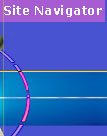 |
 |
 |
|
The famous philosopher and psychologist, Larry Day while commenting on paintings as paradigms states that, painting is a single complex image made up of many complex images. One cannot view an image as if it is the first image. The images approach us with a history made up of resemblances, borrowings, biases, personal inclusions and exclusions. These images are more cultural in nature than physiological. The character of the image is dominated by the skill that the artist was taught or persuaded to develop. The skill of the artist belongs mainly to the artist. What the artist is skilful about belongs to the age. "Image" is related to |
 |
 |
|
workshop theory slide gallery |
 |
|
|
imagination and to imitation. The perceived image is a form of congress of imaginative acts, or residue of imaginative act or refinement of imaginative process. The final image in mind of visual artist takes shape after constant confrontation with past images in process of imagination. The images in the mind have history of images in form of linear and non-linear nature. Final crucifixion includes all the possible images of past and the basis on which these images are crucified becomes ideogrammatic symbol of artist. All these images are teleological in nature. The artist's choice of image may be direct, that is, the image may be chosen because of its normal association, or it may be chosen ironically by means of displacement, re-emphasis, deconstruction etc. Whatever the choice, it is always rhetorical by nature and concerns the aspect of persuading, seducing and influencing the viewer and the artist himself. An another art critic and psychologist, Prof. Margaret Hagen states that, there is a traditional and philosophical distinction between sight ( seeing ) and knowledge. We're seeing is experience of sensation and knowledge is construction of meaningful perceptions. The percept (product of perception) is constructed out of sensory raw material through process of trial and error and testing of hypothesis rather than an "innocent " product of simulation. |
« back to topics | next topic » |